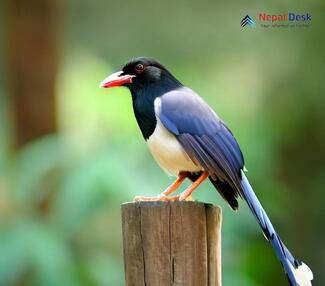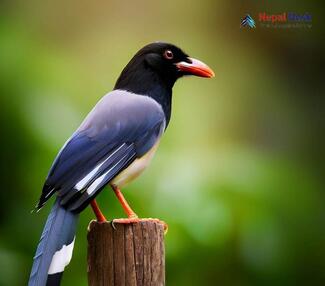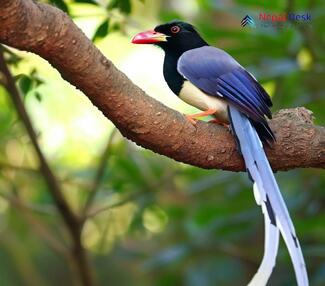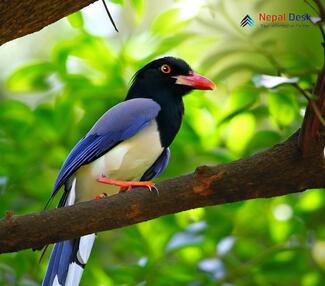Nepal, a country renowned for its diverse ecosystem, is home to an incredible array of bird species. Among these feathered inhabitants is the captivating Blue Magpie (Urocissa erythroryncha), a striking bird that has captured the hearts of birdwatchers and nature enthusiasts alike.
Physical Features and Appearance of The Blue Magpie
The Blue Magpie boasts an impressive wingspan stretching around 60 cm in length and is known for its vibrant plumage. The upper parts of the bird are resplendent in deep blue, while the underparts range from a lighter blue to grayish-white. Its long tail feathers feature black bands giving it a unique and eye-catching appearance. One distinguishing feature of this species is the bright red bill and equally vivid eye-ring, adding an impressive pop of color to its visage.
Habitat and Prey of The Blue Magpie
The natural habitat of the Blue Magpie lies within subtropical or tropical moist montane forests, often found at altitudes between 1200 to 2600 meters. When it comes to sustenance, these omnivorous birds have a varied diet comprising fruits, berries, insects, and small vertebrates such as lizards or nestlings.
Male and Female Characteristics of The Blue Magpie
There are no significant visual differences between male and female Blue Magpies. However, their roles within the species often diverge. Males are known to be territorial, defending their turf against any unwelcome intruders. Both sexes communicate through a range of calls; some harsh and raucous while others melodious and chattering.
Nesting Habits of The Blue Magpie
Blue Magpies typically form monogamous pair bonds throughout their breeding season, which spans from March to June. During this period, they construct cup-shaped nests in the fork of a tree, utilizing twigs and roots as sturdy building materials. The female is responsible for incubating the clutch of 3-5 eggs for approximately 18 days, while the male ardently guards the nest and forages for food.
Migration and Distribution of The Blue Magpie
The Blue Magpie is generally a resident bird species, which means that migration doesn't play a significant role in their life cycle. They can be found throughout the Indian Subcontinent in countries like Nepal, India, Bhutan, and northern parts of Myanmar.
Spotting Blue Magpies in Nepal
Nepal holds a proud reputation as a haven for bird enthusiasts, thanks to its rich biodiversity. For those seeking a glimpse of the enchanting Blue Magpie, ideal locations include Shivapuri Nagarjun National Park and Annapurna Conservation Area. Patience and enthusiasm are key when searching for these elusive creatures but rest assured that encountering them in their natural habitat is an experience worth cherishing.
In conclusion, Nepal's Blue Magpie is a remarkable bird species, characterized by its vibrant colors and intriguing behavior. As visitors flock to Nepal's national parks and conservation areas to witness its fascinating wildlife firsthand, the Blue Magpie continues to enamor spectators with its striking presence and vivid plumage.




